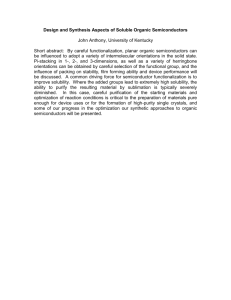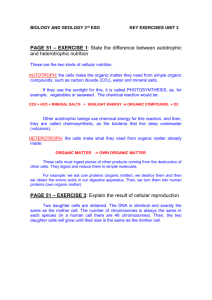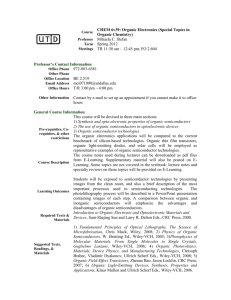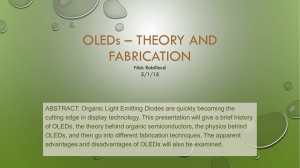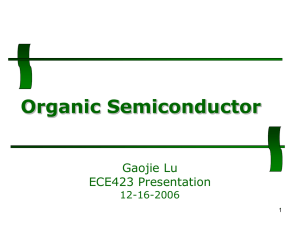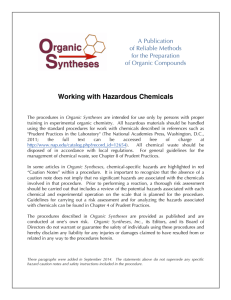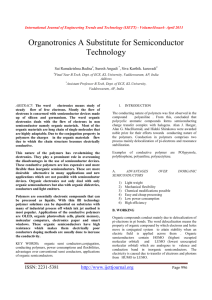Structural Properties of Organic Semiconductor Materials
advertisement
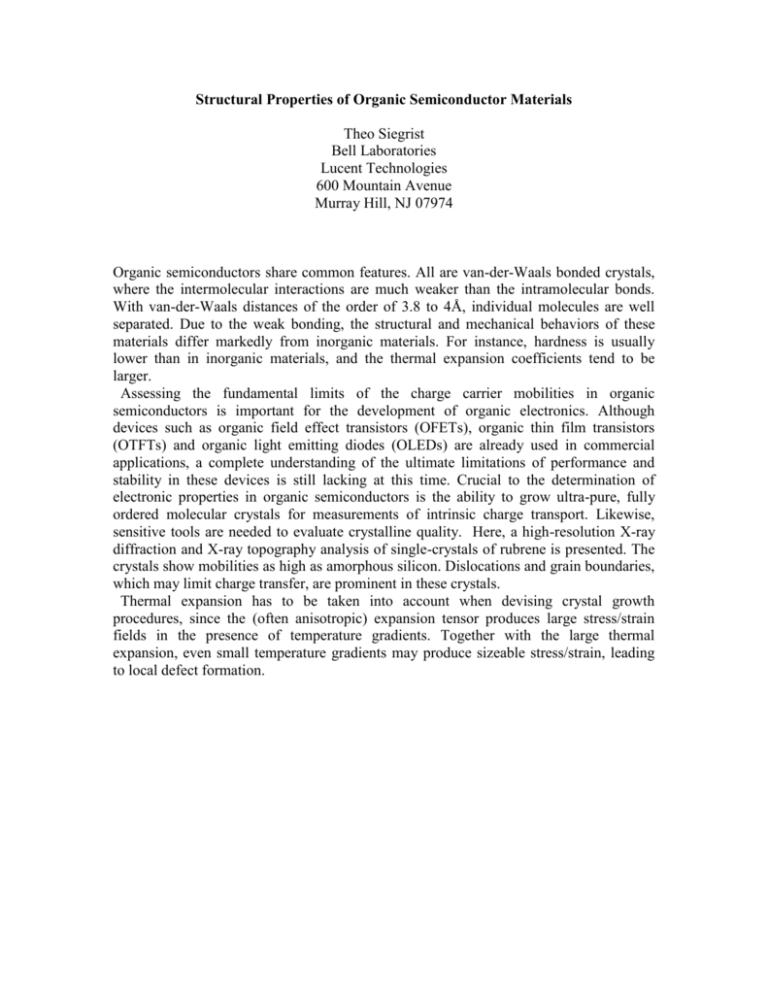
Structural Properties of Organic Semiconductor Materials Theo Siegrist Bell Laboratories Lucent Technologies 600 Mountain Avenue Murray Hill, NJ 07974 Organic semiconductors share common features. All are van-der-Waals bonded crystals, where the intermolecular interactions are much weaker than the intramolecular bonds. With van-der-Waals distances of the order of 3.8 to 4Å, individual molecules are well separated. Due to the weak bonding, the structural and mechanical behaviors of these materials differ markedly from inorganic materials. For instance, hardness is usually lower than in inorganic materials, and the thermal expansion coefficients tend to be larger. Assessing the fundamental limits of the charge carrier mobilities in organic semiconductors is important for the development of organic electronics. Although devices such as organic field effect transistors (OFETs), organic thin film transistors (OTFTs) and organic light emitting diodes (OLEDs) are already used in commercial applications, a complete understanding of the ultimate limitations of performance and stability in these devices is still lacking at this time. Crucial to the determination of electronic properties in organic semiconductors is the ability to grow ultra-pure, fully ordered molecular crystals for measurements of intrinsic charge transport. Likewise, sensitive tools are needed to evaluate crystalline quality. Here, a high-resolution X-ray diffraction and X-ray topography analysis of single-crystals of rubrene is presented. The crystals show mobilities as high as amorphous silicon. Dislocations and grain boundaries, which may limit charge transfer, are prominent in these crystals. Thermal expansion has to be taken into account when devising crystal growth procedures, since the (often anisotropic) expansion tensor produces large stress/strain fields in the presence of temperature gradients. Together with the large thermal expansion, even small temperature gradients may produce sizeable stress/strain, leading to local defect formation.

